Landing Page Conversion Rates: Everything You Should Know
It is not enough to simply create a landing page.
As business owners and content creators, you want to do it well, and of course, you really want it to perform at the highest level possible.
We often find ourselves conversion-hungry because we want to do everything possible in pursuit of landing page optimization.
The key to improving your landing page conversion rates is starting from a strategic foundation when creating each element. Once you’ve launched your landing page and tested your results, you can determine if it will accomplish your goals.
But first and foremost, you should know what an effective landing page conversion looks like. This guide will show you right now!
What is a landing page conversion rate?
Landing page conversion rates show you the proportion of visitors who convert into qualified leads by accomplishing your landing page goal. As a matter of fact, not every visitor that hits a landing page will take the action you desire. Many visitors will bounce immediately, while others might read your content and then leave or go to another page.

Let’s say you created a landing page for traffic from an email marketing campaign. The goal is to convert visitors to buy your products or services as effectively as possible. By tracking the landing page conversion rate, you’ll have a quantitative measure of how well your landing page aligns with the needs and interests of visitors. This analysis makes it much easier to improve your landing page and see the impact of these changes on the conversion rate.
How to calculate your own landing page conversion rates
It is actually quite simple to calculate your landing page conversion rates. Some landing page builder tools even automatically calculate this for you to skip a few steps, but if you want to calculate it on your own, here’s how to do it.
Before calculating your landing page conversion rate, you should determine these two things:
- The total number of people that have visited your landing page
- How many of them converted on your offer
Your conversion can look like opting in for a lead magnet, signing up for your email list, buying a digital product, contacting your team for more information, or any number of things. You get to set what your conversion looks like based on the goals of your landing page.
NOTE: Keep in mind that each conversion goal comes with its own set of average conversion rates. For instance, it is much easier to convert someone into an email subscriber than it is to convert someone into a buyer for a high-budget product. Remember this when calculating your conversion rates!
Once you’ve determined those 2 numbers, divide the number of people who converted by the number of total landing page visitors. Then, multiply the result by 100 and get your landing page conversion rate.
We will give you an example to show you how to calculate:
If 1,000 people visited your landing page last month and you converted 100 of them, you would divide 100 by 1,000 to get 0.1. Now, multiply 0.1 by 100 to get 10%.
=> Your landing page conversion rate is 10%.
What is a good landing page conversion rate?
Landing page conversion rates are subjective.
Some factors like your industry, product/ service, and target audience all weigh in on your ability to convert your web visitors into leads and then leads into customers. However, we are fully aware that people love their numbers, so we dug up some insights from WordStream in order to shine a little data on this situation:

The chart above shows that the median conversion rate is 2.35%. The top 25% websites are converting at 5.31% and above, while the top 10% are reaching 11.45% and above.
Nevertheless, it is essential to note that this graphic is focusing on conversion rates on the account as a whole, not just single landing pages. Thus, we know what the benchmark is used for a website, but what about a landing page on its own?
We decided to look around further and came across this study from Unbounce:
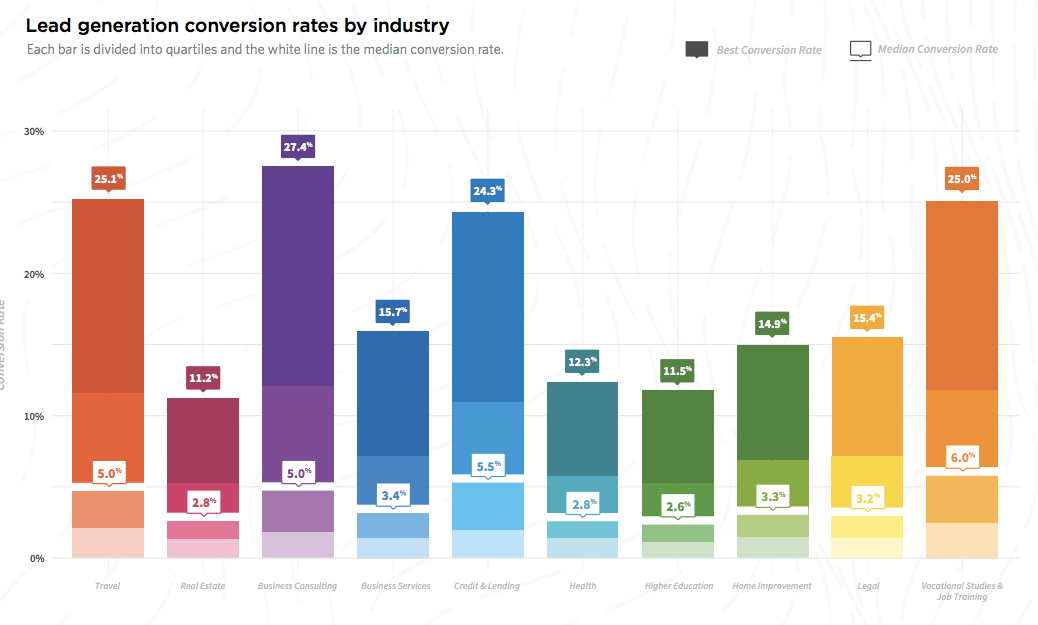
In this study, Unbounce analyzed the performance of 74.5 million visits to more than 64,000 lead generation landing pages, which were created within its platform by Unbounce customers. The landing pages spanned ten different industries, including travel, real estate, business consulting, business services, credit & lending, health, higher education, home improvement, legal, and vocational studies & job training.
The best conversion rate varied dramatically across all the industries, while the median conversion rate was between 3-5.5%.
As we mentioned above, your conversion rate will vary due to the type of industry you are in, your audience’s behavior, the offers you put out, and environmental demand.
After seeing this data, you might realize your conversion rates either aren’t where they need to be, or better yet, actually have room for improvement.
In order to help your business rise up, we have put together several landing page improvement tips to turn a good conversion rate into an amazing one.
How to improve your own landing page conversion rates
1. Pay attention to the traffic referral source
Have you wondered where your audience is coming from? How does someone find your landing page is as vital as the content you put within your landing page? If your landing page is not optimized for the traffic source, you risk turning people off when they land on your page.
Common traffic referral sources include:
- Google ads (PPC advertising)
- CTAs on your website or blog
- Social media ads
- A link inside your email
- Search engine results from SEO
Imagine the traffic referral source as the vehicle that drives your target audience to your landing page, your desired destination. When you know what vehicle is driving your audience to the landing page, you can adjust the funnel following your CTA to fit their needs.
2. Create simple forms
People often want to opt-in for offers that are simply designed. A straightforward form can do the trick.
If you add more than 2 or 3 form fields, you will see a decrease in your landing page conversion rates. That happens because the more form fields you include, the less likely your visitors will be to fill them out and hit your CTA button.
You don’t want your opt-in form to look like a survey. Simple is much better!
So, before choosing what form fields to include, ensure that you ask yourself how many details you need to send your audience the next steps. Do you actually need to know their physical location, phone numbers, or other information at this stage?
As a general rule of thumb, simply ask for their name and email address, so you can contact them about the next steps after opting in for your email list. All of AVADA landing page templates come with simple options, so it is easy to start growing your email list.
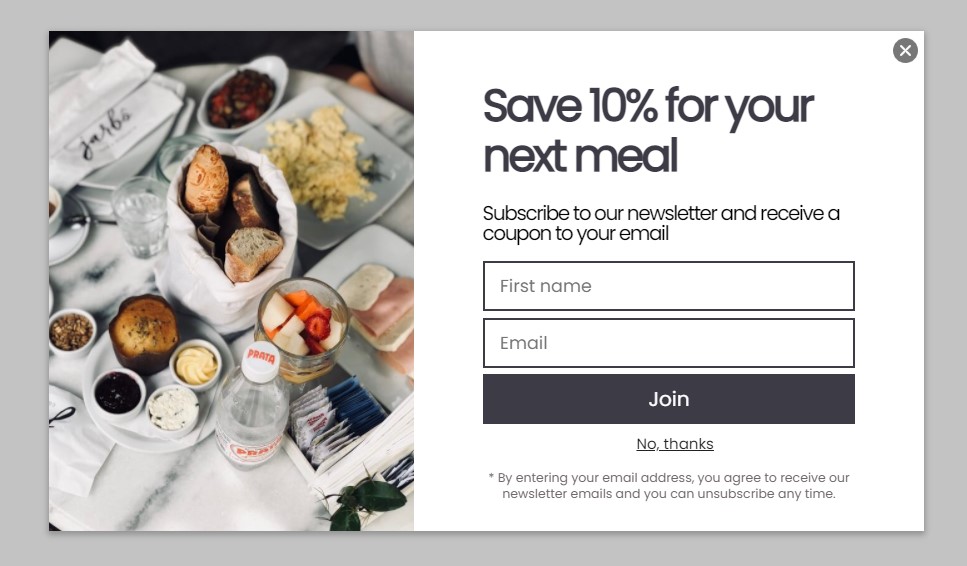
3. Clearly convey the value
Many people create fantastic content for their readers that quickly becomes meaningless, because it is hidden behind a weak CTA.
When visitors come across a CTA, they need to see the gain of clicking it immediately. If that value is not clear enough, they instead concern themselves not with what they’re gaining, but the cost of clicking.
What should you do now?
Don’t focus on the copy that explains what visitors need to do to receive your content. Instead, use the copy that outlines the offer’s benefits and the pain points it relieves. Ensure that the value of clicking outweighs the cost.
Besides, be explicit in your button copy. Button copies like “Submit” or “Buy It” are quite generic and vague. “Submit” masks what the actual action is and leaves visitors wondering what they’re receiving on that next stage. “Buy” is just as bad; it reminds visitors that there is the next step of having to pay for something, which causes them to forget about value over cost.
So, even if you’re trying to be straightforward, use some terms that emulate the process, such as “Add to Cart” or “Start Shopping.”
Wix has E-commerce specific templates in order to help online stores set up their websites easily. The CTA and value proposition on its landing page makes it clear what the benefit or value of clicking through will be. They’re literally making the button copy the main reason for being on this landing page. People want to sell.

4. Eliminate distractions
It’s essential to make sure that you are drawing your users’ attention to the most desired action on the landing page. Once you know what visitors should focus on, you can determine the layout, color, and form used on your website to attract them.
First, you should figure out your most wanted action. ConversionXL recommends you ask two following questions: What is the action you want your visitors to take most? What action do your audiences want to take most?
These 2 questions help you ensure that the action you’re choosing is realistic and aligns with what your visitors are doing.
For instance, you want your visitors to subscribe to your blog, yet you only show the “Subscribe” CTA at the bottom of your blog articles. Because of its placement, most visitors are probably focusing on the blog article and aren’t scrolling to the end to see it.
You should give visitors the ability to focus their attention on the right spot. If it is not easily accessible or noticeable, no one is going to convert.
Let’s see an example from Hotjar. The brand does a good job minimizing distractions by highlighting the slider with red and matching the chosen value with a gray background, a red button, and a checkmark next to the plan below it.
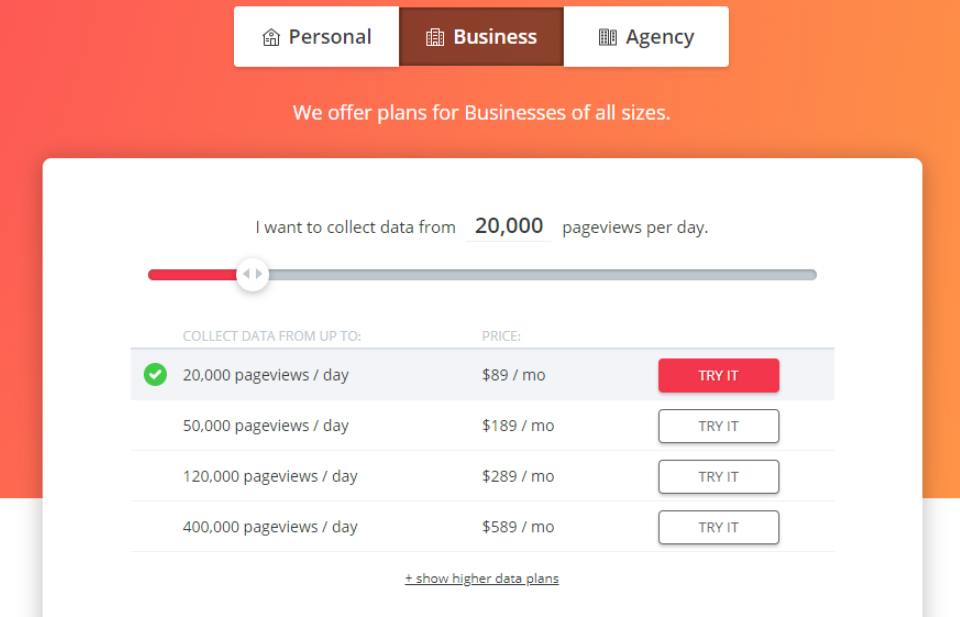
5. Reduce risk
People are risk-averse, which means that they “would prefer a sure outcome than to take a risk at something that has a potentially higher value.”
With this in mind, you should include reviews, ratings, testimonials, FAQs, awards, and accolades on your website and landing page. Regardless of whether your visitors are individual consumers or other businesses, they need to trust you before buying from you. They want to know that your website is really credible.
Khan Academy provides educational needs for teachers, students, and parents. As you can see below, the testimonial pinpoints a challenging problem for teachers nowadays - students’ engagement. This will make a teacher feel comfortable when joining, especially when they see a testimonial from a fellow teacher.
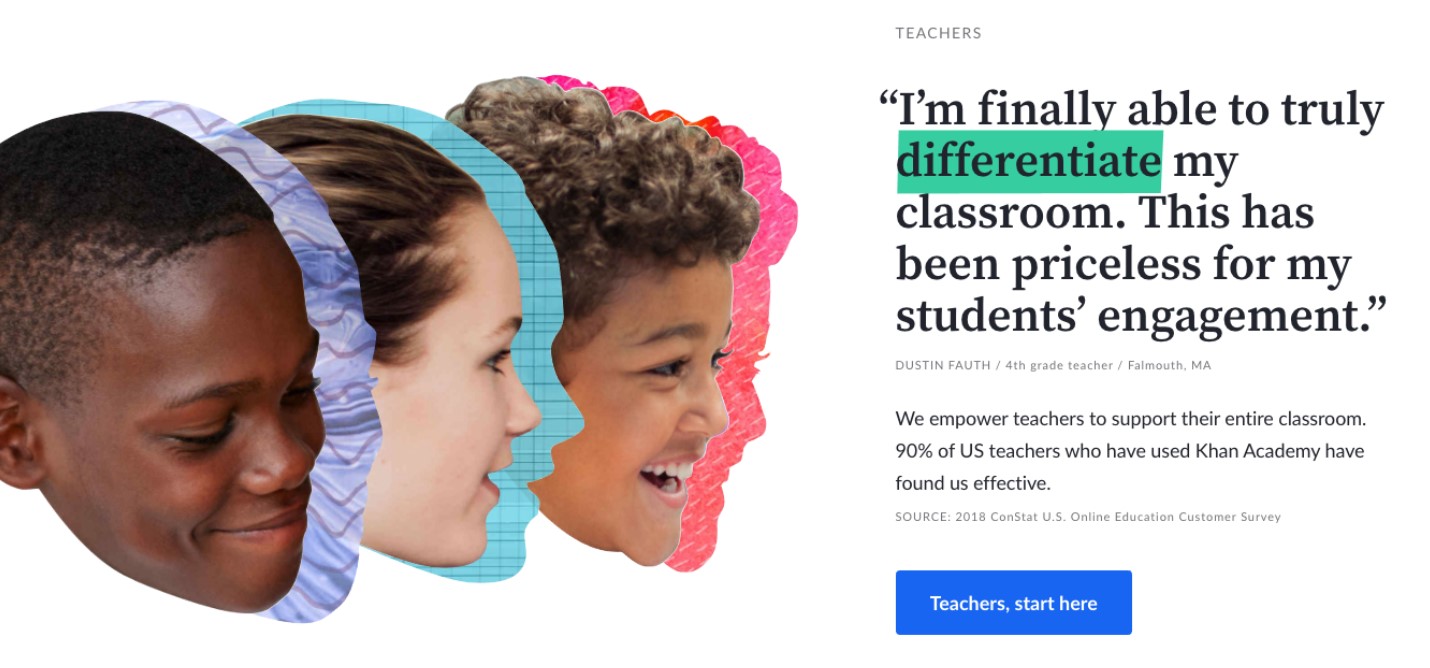
6. Leverage scarcity and urgency
Scarcity is the feeling that an item is in short supply and that it will run out in a short time. Ultimately, it induces the dreaded FOMO (Fear of Missing out). When this is triggered, people’s level of desire for the product quickly rises, creating higher demand.
In your landing page, consider including the deadline for a sale, the end date of a program, the quantity of a product you have, etc. Make sure that you make any elements that promote the urgency obvious enough, so that there is a distinction between the normal deal. Use keywords to promote urgency, such as “Hurry,” “Now,” “Instant,” etc. Red is also an ideal color psychologically to get visitors’ attention to act. Plus, never underestimate the power of a countdown timer.
It is recommended not to extend the deadline of the sale, or worse, change the quality left of your product. This will ruin the trust between you and the visitors converting, because it seems you have lied to them to entice them.
You can actually extend your offer if you notice your conversions are very low, and you want to experiment with tactics to boost conversions on it. Nevertheless, this should be done rarely.
Mouseless creates a sense of scarcity and urgency on its 25% off offer with an eye-catching countdown clock. There’s nothing more urgent than a deal that will end in just hours. People that are on the fence about buying it will probably jump on the offer.
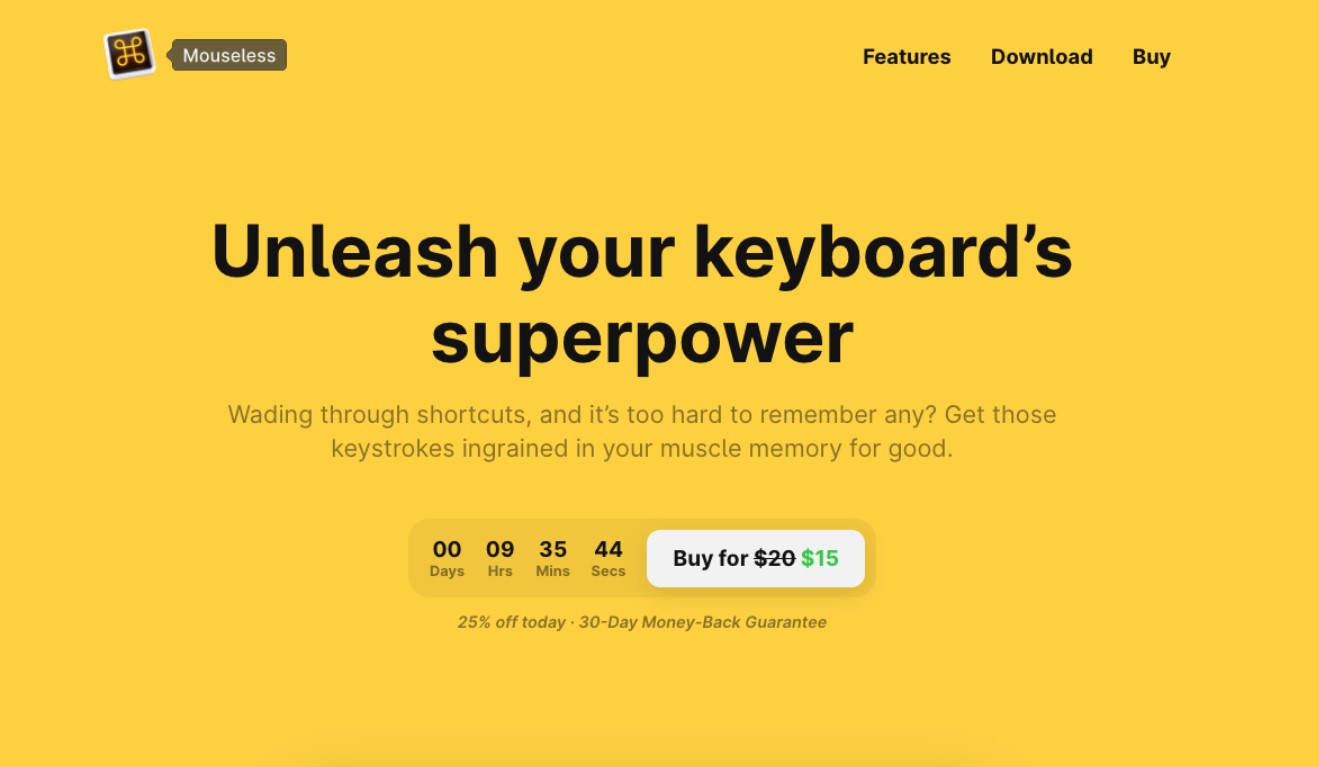
7. Add videos if possible
If you are not adding videos on your landing page, you’re missing out on a valuable way of creating comfort and trust. In fact, brands that use videos in their content marketing can realize a 66% higher average website conversion rate.
In your video, consider answering these questions:
- What is the solution you are providing?
- Why do visitors need your solution?
- What is going to happen next?
PartnerMD does it quite impressively. Right off the bat, Charleen hits the visitor with the common pain points of a normal healthcare experience. Next, she quickly explains what PartnerMD offers as well as why concierge medicine is the solution to all those pain points.
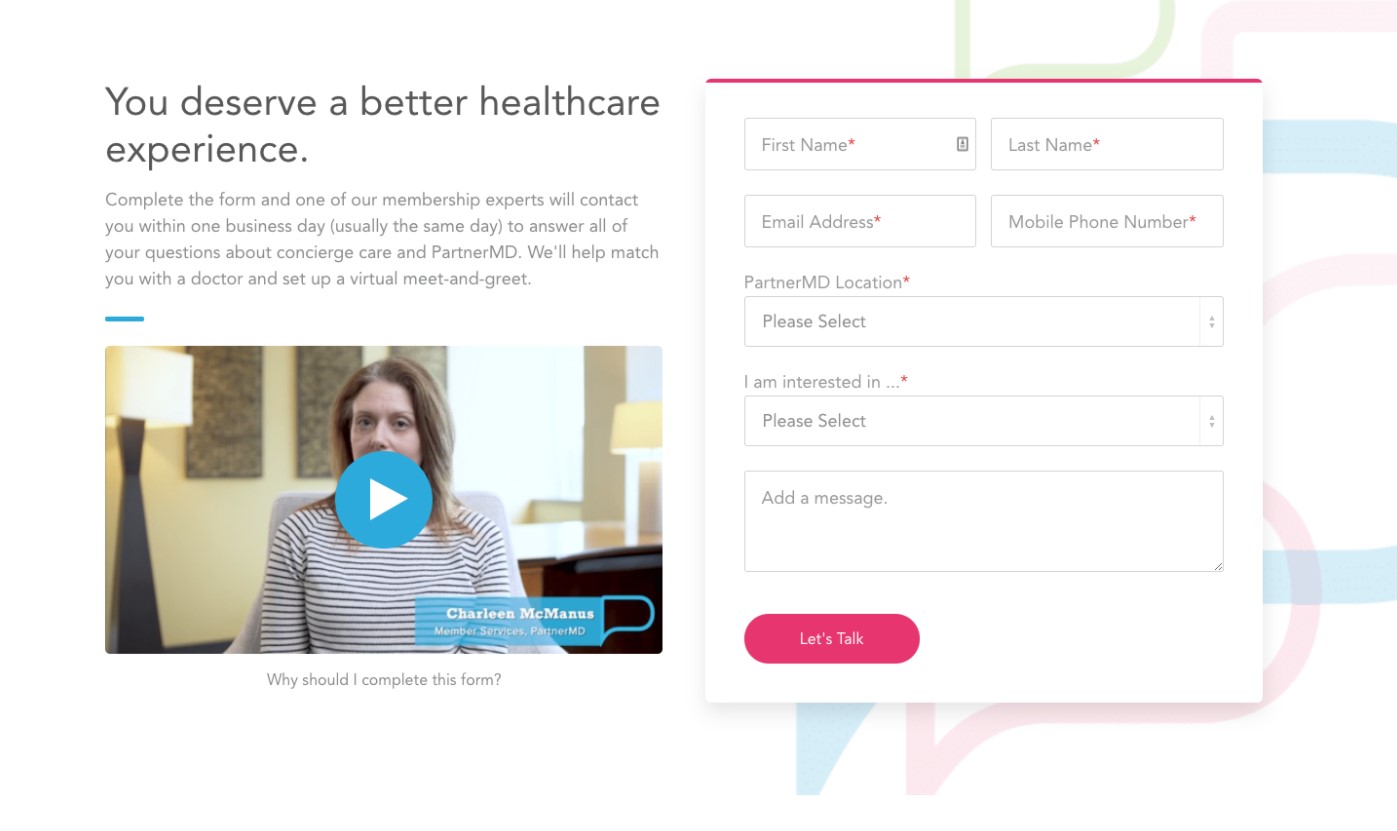
But here is the most important part. In the video, she explains why the form is placed next to the video and what will happen if the visitor fills out the form. That’s really great!
8. Analyze your data (and keep testing!)
When analyzing your landing page data, try to determine which elements make the most difference in boosting your landing page conversion rates. You won’t want to spend your precious time testing and analyzing elements that don’t really matter to your conversion rate.
We recommend starting with your headlines, visual layout and formatting, CTA button copy, and CTA button color. All of these elements actually have been proven to impact your landing page conversion rates, so ensure that your data analysis starts here.
Final thoughts
Landing pages are an essential part of all your marketing - email marketing campaigns, SMS, paid search, organic social, paid social, etc. - so make sure that they are set up for success.
Whatever industry you’re in, if you are creating landing pages, you should be actively trying to convert visitors who land there. Test out our tips and keep an eye for growth on your conversion rates!
New Posts







